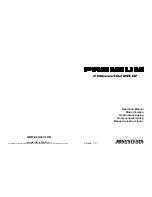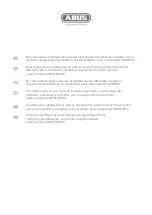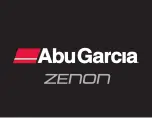
pg. 3
1-4
W
ARRANTY
Seller warrants its products to be free from defects in material and workmanship under normal and proper use in
accordance with instruction of seller for a period of one year from the date of shipment to buyer. Seller's liability
under such warranty or in connection with any other claim relating to the products shall be limited to the repair, or
at seller’s option, the replacement or refund of the purchase price, of any products or parts or components thereof
which are returned to seller freight prepaid and which are defective in material or workmanship. Products or parts
or components thereof, which are repaired or replaced by seller, will be returned to buyer freight collect. This
warranty is not intended to cover consumer products, as defined in the Magnuson-Moss Warranty-Federal Trade
Commission Improvement Act, 15 U. S. C. Sections 2301-12, which are purchased by buyer for purposes other
than resale. If buyer is not intending to resell the products, and if the products are consumer products as defined in
the Magnuson-Moss Act, the foregoing warranty, but not the limitation of seller's liability, shall be null and void.
EXCEPT AS EXPRESSLY STATED ABOVE, SELLER MAKES NO WARRANTY, EXPRESS OR IMPLIED,
WHETHER OF MERCHANTABILITY OR FITNESS FOR ANY PARTICULAR PURPOSE OR USE OR OTHERWISE,
ON THE PRODUCTS, OR ON ANY PARTS OR LABOR FURNISHED DURING THE SALE, DELIVERY OR
SERVICING OF THE PRODUCTS.
1-5
P
RECAUTIONS OF
U
SE AND
I
NSTALLATION
1. Mechanical stops, if provided on the Electric Cylinders, (ECB), are only auxiliary devices to limit the travel of the
lifting screw. Engaging a mechanical stop during electric cylinder operation can cause damage to the internal
mechanism.
2. Travel can be limited using optional limit switches. The customer is responsible for setting these limit switches.
In most applications, factory or manufacturer-assisted installation is not required. However, it is necessary that
appropriate, qualified personnel perform the installation of Joyce/Dayton products.
3. Joyce/Dayton Electric Cylinders, (ECB), are not rated for shock-loading, extreme vibration or critical speed
conditions. It is the responsibility of the user to ensure these conditions are not imposed on the actuator or the
power transmission equipment. Contact Joyce/Dayton for technical assistance.
4. If service or maintenance is required, the load must be secured or removed before any work can begin.
5.
The Electric Cylinder (ECB) can be mounted and operated in any orientation. When used in a horizontal
position, the worm should be mounted parallel with the horizon and below the gear to ensure proper lubrication.
In addition, the length of allowable rise may differ for vertical and horizontal applications. Check the catalog and
this manual for allowable rises.
6. Standard Electric Cylinders, (ECB) have vents in the protection tube (outer tube). Additional holes will
be plugged. Properly plug or vent holes to prevent dirt or moisture form contaminating the actuator.
7. Never allow the Electric Cylinder to retract beyond the minimum closed position or extend beyond the maximum
open position, as damage to the unit can occur.
8. External temperature may exceed 230 Degrees F. near maximum duty cycle. Use caution to prevent personal
injury.
9.
Do not use in applications where Electric Cylinder can be jammed against an immovable object
.
10. A brake motor is required on Ball Screw Electric Cylinders that have efficiencies greater than or equal to 30%.
This prevents the load from drifting when power is off.
1-6
G
ENERAL
I
NSTALLATION INSTRUCTIONS
1. Ensure that all personnel who will service or operate equipment are familiar with its use and limitations.
2. Secure or remove the load before any installation procedures begin.
3. Be certain the rating of the Electric Cylinder (ECB) meets or exceeds the load.
4. The Electric Cylinder (ECB) must be mounted on a rigid structure which is sufficient to support the maximum
possible load. The structure must be rigid. An under-designed structure could lead to premature wear or failure.
5. Drive shaft alignment is critical. Misalignment will cause reversing stresses in rotating members and will lead to
fatigue failure. Correct coupling specification is critical.
6. In systems with shafting, miter boxes, etc., confirm that the shafts and jacks operate without binding or
excessive force before powered drive devices are engaged.
7. When fastening the load to an Electric Cylinder, make sure the actuator is in the retracted position. This
positions the load accurately with respect to the lifting screw centerline. Never pull the translating tube to one




























